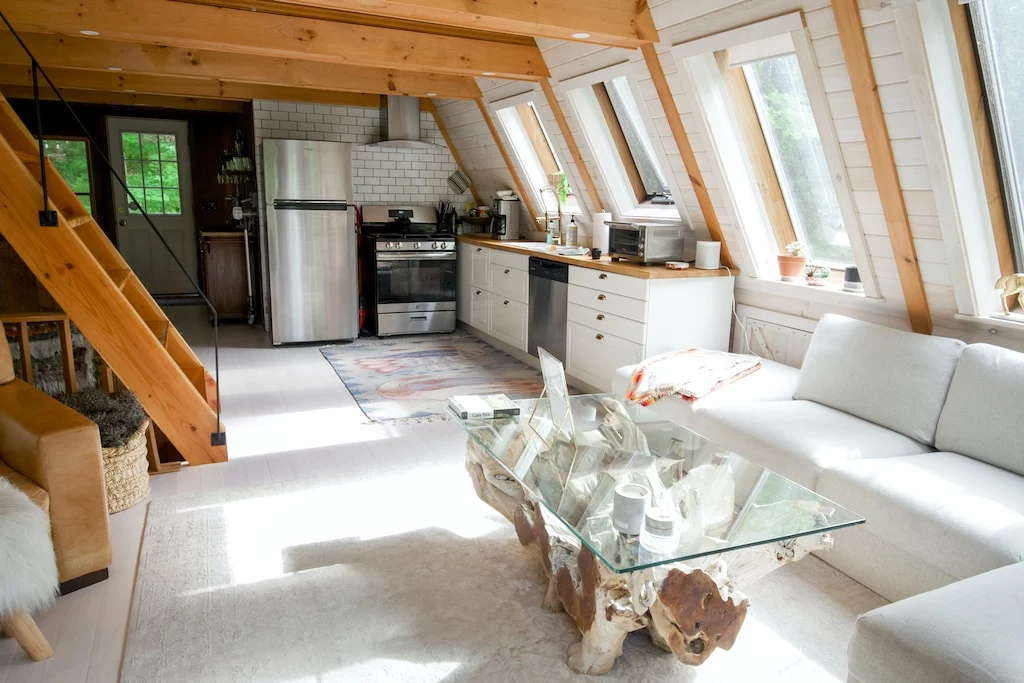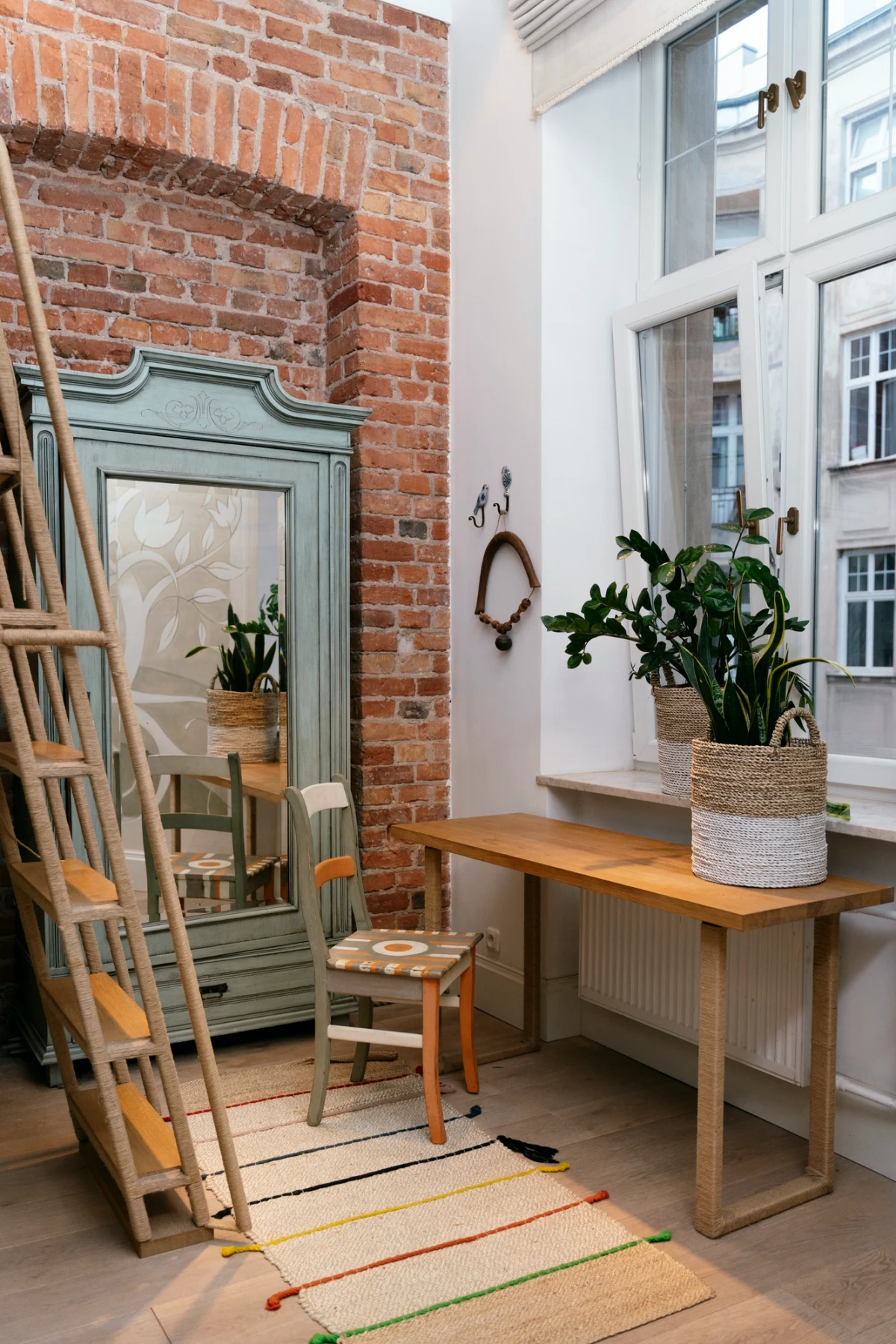Don’t Buy a Loft Ladder Until You Read This: A Pro’s No-Nonsense Guide
I’ve seen some things in my time renovating homes. Let’s just say people get… creative… when trying to access their lofts. Think wobbly stepladders perched on even wobblier chairs, or gymnastic-style leaps of faith through the hatch. It’s a recipe for disaster.
In this article
Honestly, a proper loft ladder isn’t just a nice-to-have; it’s a basic safety feature for a usable home. But picking the right one is way more involved than just grabbing the first box you see at the DIY store. I’ve been called out to fix so many installations where the ladder was too long, too short, or couldn’t even unfold because it smacked right into a wall. Getting this right from the very beginning will save you a ton of cash, time, and headaches.
So, think of this as the exact same process I follow on every single job. We’re going to cover the essential measurements you absolutely cannot skip, figure out why your ceiling’s structure is so important, and pick the perfect ladder for your space. Let’s get it right the first time.

First Things First: The Measurements You Can’t Afford to Mess Up
Okay, before you even think about browsing online, you need to grab a tape measure. These four measurements are completely non-negotiable. Getting them right is 90% of the battle, I promise. Write them down, double-check them, and then maybe check them one more time. A few millimeters off here can literally make a ladder unusable.
1. The Rough Opening (Length & Width)
This is simply the hole in your ceiling. Most modern loft ladders come as a neat all-in-one kit—ladder, hatch, and a wooden frame (sometimes called a cassette). This whole unit has to fit perfectly into that opening.
How to get it right: Measure the length and width of the opening from one inside edge to the other. And don’t just measure once! Take two length measurements and two width measurements. Ceilings are almost never perfectly square. A quick pro tip: measure the two diagonals. If they match, your opening is square. If not, you’ll need to use the smallest measurement to be safe.

Why it’s crucial: The manufacturers are super specific about the required opening size. A ladder listed for a 1200mm x 600mm opening needs exactly that. There’s very little wiggle room. If you try to jam it in, you can warp the frame, and the hatch will never close properly.
2. Ceiling Height (Floor to Ceiling)
This is probably the most common mistake people make. This measurement dictates how long the actual ladder needs to be to reach the floor at a safe angle.
How to get it right: Measure the vertical distance from your finished floor (yes, including the carpet or laminate) straight up to the face of the ceiling. Take a measurement in a couple of different spots just to be sure.
Why it’s crucial: Every ladder is made for a specific range of heights, like 2.3m to 2.8m. If your ceiling is lower, you’ll probably need to trim the ladder sections. If it’s higher, you absolutely must buy a model designed for tall ceilings or one that has a compatible extension kit. Using a ladder that’s too short is incredibly dangerous; the angle will be way too steep, and the feet won’t sit flat on the floor.

3. Swing Clearance (The Big One Everyone Forgets)
This is the hidden ‘gotcha’. It’s the amount of clear space the ladder needs on the landing to unfold without hitting anything. It’s the measurement that, when forgotten, leads to a brand-new ladder bashing into a wall or a radiator.
How to get it right: Look up the technical specs for the ladder you’re interested in. The manufacturer will list a “swing clearance” or “arc” measurement. This is the horizontal distance from the hinge-side of the hatch out into the room. Measure that distance in your own space to see if you have enough room. Don’t forget to account for the swing of nearby doors!
Why it’s crucial: I was once called to a new apartment where the owner had bought a gorgeous wooden folding ladder. The problem? The landing was only 1.2m wide, but the ladder needed 1.6m to unfold. It was useless. We had to replace it with a much more expensive concertina ladder, doubling their cost. A painful lesson.
4. Loft Landing Space
This is all about what’s happening up in the loft. You need clear space for the ladder to rest when it’s stowed away and, more importantly, a safe spot for you to step off.
How to get it right: Poke your head up there. Where will the ladder sit when it’s folded? Is there a water tank or a bunch of pipes in the way? Also, check your headroom. You need enough vertical space to stand up or at least move around comfortably without smacking your head on a roof timber.
Why it’s crucial: You don’t want your first step off the ladder to be into a maze of wiring or onto a low-hanging beam. For a sliding-style ladder, this is even more critical, as it needs a long, clear patch of loft floor to rest on.
What’s Holding Your Ceiling Up? (It Matters. A Lot.)
Got your numbers? Great. Now, we need to talk about what you’re attaching this thing to. A hole in the ceiling is a structural weak point, and if you don’t account for that, you’re risking more than just a cosmetic crack.
Traditional Timber Joists
This is the classic setup in many homes: parallel wooden beams that form the skeleton of your ceiling. You can usually find them with a stud finder or by tapping the ceiling and listening for the solid thud. Ideally, your loft hatch will fit neatly between two existing joists without you having to cut anything.
But what if it doesn’t? If you need to cut a joist to make the opening wider, this is where you should seriously consider calling a pro. Cutting a joist without reinforcing the structure is a huge no-no. The proper way involves installing “trimmers” – perpendicular timbers that frame the opening and transfer the load to the neighboring joists. Without them, you risk a sagging ceiling or, worse, a dipping floor in the room above. I’ve seen it happen, and the repair bill is never pretty.
Modern Engineered Trusses
If your home was built in the last few decades, you probably have engineered roof trusses – those web-like wooden structures in your loft. They look a bit like complex triangles.
Here’s the golden rule, and I can’t say this loudly enough: NEVER, EVER CUT A ROOF TRUSS.
Don’t drill it, don’t notch it, don’t even look at it the wrong way. Every single piece of wood in a truss is precisely engineered for tension and compression. Cutting one small part can compromise your entire roof. If you have trusses, you must choose a ladder that fits in the clear space between them.
Okay, Let’s Pick Your Ladder Style
Now for the fun part. With your measurements and structural know-how, you can choose a style that actually works for your home.
Folding Ladders (Wood or Aluminum)
These are the crowd-pleasers. They fold up into a neat stack on the back of the hatch door and usually come as a complete kit. They’re very popular, and you’ll see brands like Fakro and Velux offering excellent options.
- The Good: They feel incredibly stable and secure, almost like a permanent set of stairs. The wooden ones look fantastic, and they often have nice, deep treads.
- The Catch: They need the most swing clearance. A heavy wooden one can also be a bit of a workout to pull down if it doesn’t have a good spring-assist system.
- The Cost: Expect to pay anywhere from $300 to over $700 for a good quality wooden or high-end aluminum model.
By the way, a little sign of quality on wooden ladders is how the treads are joined. Look for dovetail joints; they’re way stronger than treads that are just screwed into the sides.
Sliding Ladders (Mostly Aluminum)
These come in two or three sections that slide past each other. You mount the mechanism to the loft floor, and the ladder slides down through the opening.
- The Good: They need less swing clearance than folding ladders and are often the most budget-friendly choice. They’re lightweight and simple to operate.
- The Catch: They take up floor space in your loft when stowed away. They can feel a bit less rigid than a folding ladder and often don’t come with an integrated hatch, so you’ll have to sort that out separately.
- The Cost: A solid bet for those on a budget. You can find these for $150 to $300.
Concertina / Scissor Ladders (Metal)
These are the ultimate problem-solvers for tight spots. They expand and retract vertically, collapsing into a tiny block.
- The Good: They require almost zero swing clearance, making them perfect for hallways, cupboards, or tiny landings.
- The Catch: They’re generally the most expensive option. The treads can be narrower, which isn’t ideal for carrying bulky items. Some people find them a bit springy, but high-quality models are very robust.
- The Cost: You’re paying for convenience here. Prices typically start around $400 and can go up to $1,000+ for heavy-duty versions.
Don’t Forget These Make-or-Break Features
The details separate a ladder you put up with from one that’s a joy to use.
- Insulation & Draught-Proofing: A cheap, uninsulated hatch is a hole in your home’s thermal shield. Look for a ladder’s U-value (a measure of heat loss). The lower the number, the better. Quick tip: Aim for a U-value under 1.5 W/m²K if you can. A good hatch with thick insulation and rubber seals will pay for itself in reduced heating bills.
- Load Capacity: This is the max weight the ladder can safely hold. Most domestic ladders are rated for 150kg (around 330 lbs). But think about it—that’s your weight plus the heavy box of Christmas decorations you forgot about. If you’re planning on moving heavy stuff, consider a heavy-duty model rated for 200kg or more.
- A Handrail: This isn’t an optional extra; it’s essential. A handrail, even a small one, makes a world of difference for safety and confidence. I wouldn’t fit a ladder without one.
- Non-Slip Treads: The steps must be grooved or textured. Your safety depends on it.
Installation: DIY Dream or Call a Pro?
So, you’ve got the perfect ladder. Can you fit it yourself?
The Tools You’ll Actually Need:
If you’re going the DIY route, you’ll need more than just hope. Make sure you have a reliable tape measure, a stud finder, a good level, a power drill with various bits, a square, and a pencil. Oh, and a helper! These things are surprisingly awkward to lift alone.
Go for DIY if: You have an existing opening that’s the right size, you don’t need to cut joists, you’re comfortable working at height, and you have a friend to help. Be realistic—if it’s your first time, block out a full afternoon for the job.
Call a Pro if: You need to create or enlarge an opening, you have to cut a joist, you have a trussed roof, or you’re just not 100% confident. A professional carpenter can usually get it done in 3-4 hours (if no major cutting is needed) for around $300-$600, depending on your location. It’s money well spent for peace of mind.
Lesser-Known Trick for DIYers: The hardest part is holding the heavy ladder box up in the opening while you fix it. Here’s how the pros do it: screw two temporary support battens (just sturdy pieces of wood) across the underside of the opening. You can then lift the ladder cassette and rest it on these battens. This holds all the weight, freeing up your hands to get it perfectly level before driving in the permanent screws.
Final Checklist Before You Buy
Feeling ready? Run through this one last time. It’s the difference between a successful project and a trip back to the store.
- Rough Opening: Length and width measured twice? Diagonals checked?
- Ceiling Height: Measured from the finished floor to the ceiling?
- Swing Clearance: Is there enough room on the landing for the ladder to unfold?
- Loft Landing Space: Is it clear upstairs for the stowed ladder and for you to step off safely?
- Structure Check: Do you know if you have joists or trusses? Are you 100% sure you don’t need to cut anything structural?
Choosing a loft ladder is a technical job disguised as a simple shopping trip. Take your time, get the measurements right, respect your home’s structure, and you’ll make a brilliant long-term investment in your home’s safety and functionality.










